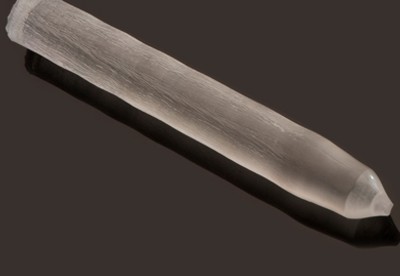A quantum version of the Internet is seen as a desirable evolution of the global connectivity platform that has now been around for three decades. Going quantum would allow for quantum entanglement to become the means of instantaneous transmission between two quantum devices. Today the non-quantum Internet transmits data as light particles, photons, which are streamed as data bits from point A to point B over fibre-optic cable. But with quantum entanglement, distant photons will be linked using teleportation measuring the state of one photon in an entangled pair to effectively complete the link at better than light speed.
Current testing using quantum memory crystals made from yttrium orthosilicate have effectively entangled photons separated by 5 kilometres (3.1 miles). Stated Myunghik Kim of Imperial College London, “The photons are used not to send the information, but to share the entanglement. Then I can use that entanglement. I can teleport the quantum information I want from A to B.”

Why Yttrium Orthosilicate
As seen above, yttrium orthosilicate crystals provide ideal storage characteristics for optical memory and information processing applications. In the pursuit of a quantum Internet, these crystals are seen as useful for the storing and entanglement of information teleported across the network.
Entanglement in quantum communication makes it possible for two separate nodes containing the quantum memory crystals to correlate. For longer distances, the entanglement is extended by chaining several crystals together to allow communications where data stored as photons gets sent and received in the order of what has been transmitted.
So far, the record 5-kilometre distance in teleporting quantum-enabled data was accomplished at the Institute of Photonic Sciences in Castelldefels, Spain last year. States Hugues de Riematten, of the Institute, “The idea is that you try one link, and when you have a success, then you stall this entanglement and this link and you wait for the other link to be also ready. And when the other links are ready, then you can combine them together. This will extend the entanglement towards larger and larger distances.”
The Future Quantum Internet
What’s to be gained by implementing a quantum Internet? We would be able to transmit data at faster than light speed over immense distances. The data wouldn’t stream linearly as it does today on the Internet using Boolean constructs (data bits as either zeros or ones). Instead, the zeros and ones would be transmitted simultaneously increasing the volume of data geometrically.
But to get there we need to create the devices to make the quantum Internet infrastructure a reality. That means new quantum routers, repeaters, gateways, hubs, and other instrumentation in which the quantum memory crystal seen at the top of this posting will play a big part. That’s because it can be embedded in these next-generation quantum devices.
What Happens to Our Internet When We Go Quantum?
Nothing. The Internet we know today will still exist. It will remain an important medium for consumers to exchange information and find things. But large companies, academia, and governments will find the quantum Internet a very desirable evolution. The quantum Internet will be far more difficult to hack. That will make banking and financial, health, supply chain, and government data exchanges far more secure.
For academia, the volume of data that the quantum Internet will be capable of transmitting will lead to a speed-up in experimentation and research. And for the increasing Internet of Things (IoT), devices and sensors that will soon outnumber human users on today’s Internet, it means they will be able to embed machine learning and artificial intelligence (AI) applications beyond the capabilities of anything we see today. And when we are ready to send space probes to our nearest neighbouring stars, it means we will get back data so fast it won’t take multiple decades before we learn what has been discovered.









